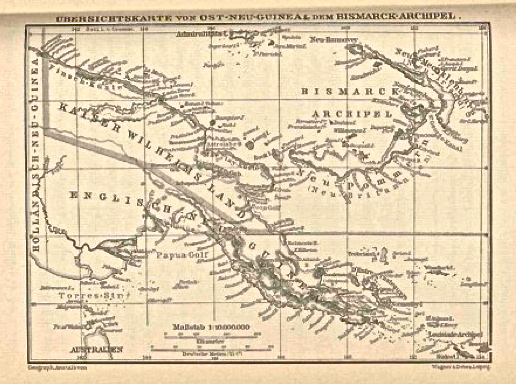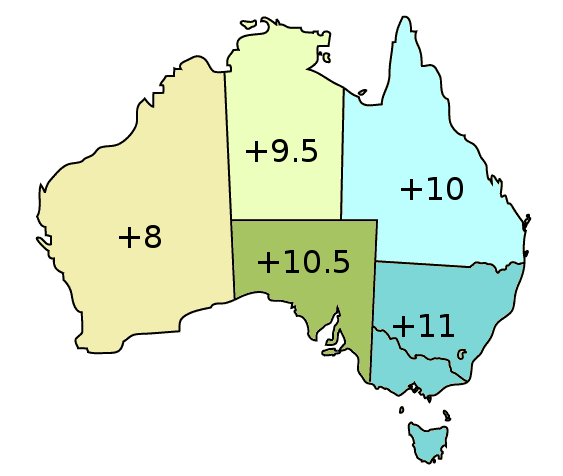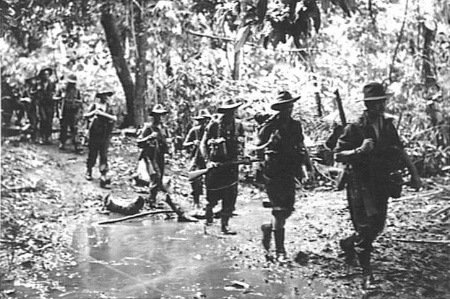|
Wasu Rural LLG
Wasu Rural LLG is a local-level government (LLG) of Morobe Province, Papua New Guinea. During World War II, the Battle of Sio took place in the LLG. Wards *01. Yakawa *02. Sio 2 *03. Sio 1 *04. Kulavi *05. Wasu Station *06. Kiari *07. Weleki *08. Towat *09. Welowelo *10. Singorokai *11. Roinji (Ronji language Ronji is a minor Austronesian language of northern Papua New Guinea. Locations Ronji is spoken in two villages, one in Morobe Province and one in Madang Province: *Roinji village (), Wasu Rural LLG, Morobe Province *Gali village (), Bonga ward ... speakers) *12. Hungo *13. Satop *14. Wawet *15. Domut *16. Belombibi *17. Karangan *18. Niniea References * * Local-level governments of Morobe Province {{MorobeProvince-geo-stub ... [...More Info...] [...Related Items...] OR: [Wikipedia] [Google] [Baidu] |
Papua New Guinea
Papua New Guinea (abbreviated PNG; , ; tpi, Papua Niugini; ho, Papua Niu Gini), officially the Independent State of Papua New Guinea ( tpi, Independen Stet bilong Papua Niugini; ho, Independen Stet bilong Papua Niu Gini), is a country in Oceania that comprises the eastern half of the island of New Guinea and its offshore islands in Melanesia (a region of the southwestern Pacific Ocean north of Australia). Its capital, located along its southeastern coast, is Port Moresby. The country is the world's third largest island country, with an area of . At the national level, after being ruled by three external powers since 1884, including nearly 60 years of Australian administration starting during World War I, Papua New Guinea established its sovereignty in 1975. It became an independent Commonwealth realm in 1975 with Elizabeth II as its queen. It also became a member of the Commonwealth of Nations in its own right. There are 839 known languages of Papua New Guinea, on ... [...More Info...] [...Related Items...] OR: [Wikipedia] [Google] [Baidu] |
Provinces Of Papua New Guinea
For administrative purposes, Papua New Guinea is divided into administrative divisions called provinces. There are 22 provincial-level divisions, which include 20 provinces, the Autonomous Region of Bougainville, and the National Capital District of Port Moresby. In 2009, the National Parliament of Papua New Guinea created two additional provinces, that officially came into being on 17 May 2012."PNG’S new province Hela, Jiwaka declared" , ''The National'', 17 May 2012 They were Hela Province, which was split from [...More Info...] [...Related Items...] OR: [Wikipedia] [Google] [Baidu] |
Morobe Province
Morobe Province is a province on the northern coast of Papua New Guinea. The provincial capital and largest city is Lae. The province covers 33,705 km2, with a population of 674,810 (2011 census), and since the division of Southern Highlands Province in May 2012 it is the most populous province. It includes the Huon Peninsula, the Markham River, and delta, and coastal territories along the Huon Gulf. The province has nine administrative districts. At least 101 languages are spoken, including Kâte and Yabem language. English and Tok Pisin are common languages in the urban areas, and in some areas pidgin forms of German are mixed with the native language. History Nomenclature The Morobe Province takes its name from former German administration center of ''Morobe'' southeast of the Lae. Under German administration, Morobe (meaning post) was named Adolfhafen for the German Deutsch Neuguinea-Kompagnie's Adolf von Hansemann and German word ''hafen'' (''heɪfən'') meaning port) ... [...More Info...] [...Related Items...] OR: [Wikipedia] [Google] [Baidu] |
Districts Of Papua New Guinea
This page is a list of districts of Papua New Guinea. Administrative divisions On the highest level, Papua New Guinea is divided into 4 regions, which are Highlands, Islands, Momase, and Southern regions. Below, Papua New Guinea has 22 province-level divisions: 20 integrated provinces, the autonomous province of North Solomons (Bougainville) and the National Capital District. Each province has one or more districts, and each district has one or more local-level government (LLG) areas. For census purposes, the LLG areas are subdivided into wards and those into census units. Wards typically consist of a few hundred to a few thousand individuals, and are the lowest level of government administration under local-level governments (LLGs). List of districts by region and province Highlands Region Chimbu Province *Chuave District *Gumine District * Karimui-Nomane District * Kerowagi District *Kundiawa-Gembogl District * Sina Sina-Yonggomugl District (Sinasina-Yonggomugl Dist ... [...More Info...] [...Related Items...] OR: [Wikipedia] [Google] [Baidu] |
Languages Of Papua New Guinea
Papua New Guinea, a sovereign state in Oceania, is the most linguistically diverse country in the world. According to Ethnologue, there are 839 living languages spoken in the country. In 2006, Papua New Guinea Prime Minister Michael Somare, Sir Michael Somare stated that "Papua New Guinea has 832 living languages (languages, not dialects)." Languages with statutory recognition are Tok Pisin, English language, English, Hiri Motu, and Papua New Guinean Sign Language.There is no specific legislation proclaiming official languages in Papua New Guinea. In the constitution of Papua New Guinea, section 2(11) (literacy) of its preamble mentions '...all persons and governmental bodies to endeavour to achieve universal literacy in Pisin, Hiri Motu or English' as well as "tok ples" and "ita eda tano gado". In addition, section 67 (2)(c) mentions "speak and understand Pisin or Hiri Motu, or a vernacular of the country, sufficiently for normal conversational purposes" as a requirement for citiz ... [...More Info...] [...Related Items...] OR: [Wikipedia] [Google] [Baidu] |
Postal Code
A postal code (also known locally in various English-speaking countries throughout the world as a postcode, post code, PIN or ZIP Code) is a series of letters or digits or both, sometimes including spaces or punctuation, included in a postal address for the purpose of sorting mail. the Universal Postal Union lists 160 countries which require the use of a postal code. Although postal codes are usually assigned to geographical areas, special codes are sometimes assigned to individual addresses or to institutions that receive large volumes of mail, such as government agencies and large commercial companies. One example is the French CEDEX system. Terms There are a number of synonyms for postal code; some are country-specific; * CAP: The standard term in Italy; CAP is an acronym for ''codice di avviamento postale'' (postal expedition code). * CEP: The standard term in Brazil; CEP is an acronym for ''código de endereçamento postal'' (postal addressing code). * Eircode: ... [...More Info...] [...Related Items...] OR: [Wikipedia] [Google] [Baidu] |
Time In Australia
Australia uses three main time zones: Australian Western Standard Time (AWST; UTC+08:00), Australian Central Standard Time (ACST; UTC+09:30), and Australian Eastern Standard Time (AEST; UTC+10:00). Time is regulated by the individual state governments, some of which observe daylight saving time (DST). Australia's external territories observe different time zones. Standard time was introduced in the 1890s when all of the Australian colonies adopted it. Before the switch to standard time zones, each local city or town was free to determine its local time, called local mean time. Now, Western Australia uses Western Standard Time; South Australia and the Northern Territory use Central Standard Time; while New South Wales, Queensland, Tasmania, Victoria, Jervis Bay Territory, and the Australian Capital Territory use Eastern Standard Time. Daylight saving time (+1 hour) is used in jurisdictions in the south and south-east: South Australia, New South Wales, Victoria, Tasmania, ... [...More Info...] [...Related Items...] OR: [Wikipedia] [Google] [Baidu] |
Local-level Governments Of Papua New Guinea
Papua New Guinea has 326 local-level governments (LLGs) comprising 6,112 wards as of 2018. ''Note'': LLG names with slashes (/) are listed with dashes (-) due to technical limitations on previous versions of the Wikipedia software. Administrative divisions At the highest level, Papua New Guinea is divided into four regions, namely the Highlands, Islands, Momase, and Southern regions. Below, Papua New Guinea has 22 province-level divisions: 20 integrated provinces, the autonomous province of North Solomons (Bougainville) and the National Capital District. Each province has one or more districts, and each district has one or more local-level government (LLG) areas. For census purposes, the LLG areas are subdivided into wards and those into census units. Wards typically consist of a few hundred to a few thousand individuals, and are the lowest level of government administration under LLGs. Wards are further divided into census units (CU). List of local-level governments by ... [...More Info...] [...Related Items...] OR: [Wikipedia] [Google] [Baidu] |
World War II
World War II or the Second World War, often abbreviated as WWII or WW2, was a world war that lasted from 1939 to 1945. It involved the World War II by country, vast majority of the world's countries—including all of the great powers—forming two opposing military alliances: the Allies of World War II, Allies and the Axis powers. World War II was a total war that directly involved more than 100 million Military personnel, personnel from more than 30 countries. The major participants in the war threw their entire economic, industrial, and scientific capabilities behind the war effort, blurring the distinction between civilian and military resources. Air warfare of World War II, Aircraft played a major role in the conflict, enabling the strategic bombing of population centres and deploying the Atomic bombings of Hiroshima and Nagasaki, only two nuclear weapons ever used in war. World War II was by far the List of wars by death toll, deadliest conflict in hu ... [...More Info...] [...Related Items...] OR: [Wikipedia] [Google] [Baidu] |
Battle Of Sio
The Battle of Sio, fought between December 1943 and March 1944, was the break-out and pursuit phase of General Douglas MacArthur's Huon Peninsula campaign, part of the New Guinea campaign of World War II. After the defeat of the Japanese in the Battle of Sattelberg, Australian Army forces broke through the Japanese positions around Finschhafen. Constant pressure from US Navy PT boats, Australian land forces and Allied aircraft brought the Japanese logistical system to the brink of collapse, resulting in disease, malnutrition, and privation for the Japanese soldiers. Meanwhile, the Allied supply system grappled with the problems of terrain and climate, particularly inclement weather and rough monsoonal seas that hampered and occasionally prevented delivery of supplies by sea. Australian and Papuan troops advanced along the coast of the Huon Peninsula, using infantry, tanks, and air strikes against the Japanese positions, which were generally sited at creek crossings in the ju ... [...More Info...] [...Related Items...] OR: [Wikipedia] [Google] [Baidu] |
Sio, Papua New Guinea
Sio is a town on the north coast of Huon Peninsula, Papua New Guinea. It is located in Wasu Rural LLG, Morobe Province. History A Lutheran mission station was established at Sio in 1910. The town was occupied by Imperial Japanese forces during World War II and was a major operating base. During the Huon Peninsula campaign the town was wrestled from the defending elements of the Japanese 20th Division by the Australian 9th Division and the Papuan Infantry Battalion, during the Battle of Sio The Battle of Sio, fought between December 1943 and March 1944, was the break-out and pursuit phase of General Douglas MacArthur's Huon Peninsula campaign, part of the New Guinea campaign of World War II. After the defeat of the Japanese in ..., fought between December 1943 and January 1944. ReferencesPacific War Wrecks Populated places in Morobe Province {{MorobeProvince-geo-stub ... [...More Info...] [...Related Items...] OR: [Wikipedia] [Google] [Baidu] |
Wasu, Papua New Guinea
Wasu is a town in Papua New Guinea. It is the capital of Tewae-Siassi District in Morobe Province, and is located on the Huon Peninsula. Wasu also serves as a gateway town for the Kabwum District, and is the seat of Wasu Rural LLG. Wasu is also a small town that serves all of Kabwum District, Tewae Siassi District and part of Madang Province. The town was established in the early 1900s when the first Lutheran Missionaries came. Wasu was used as their port. Climate Wasu has a tropical rainforest climate A tropical rainforest climate, humid tropical climate or equatorial climate is a tropical climate sub-type usually found within 10 to 15 degrees latitude of the equator. There are some other areas at higher latitudes, such as the coast of southea ... (Af) with heavy rainfall year-round. References Populated places in Morobe Province Port cities in Oceania {{MorobeProvince-geo-stub ... [...More Info...] [...Related Items...] OR: [Wikipedia] [Google] [Baidu] |






